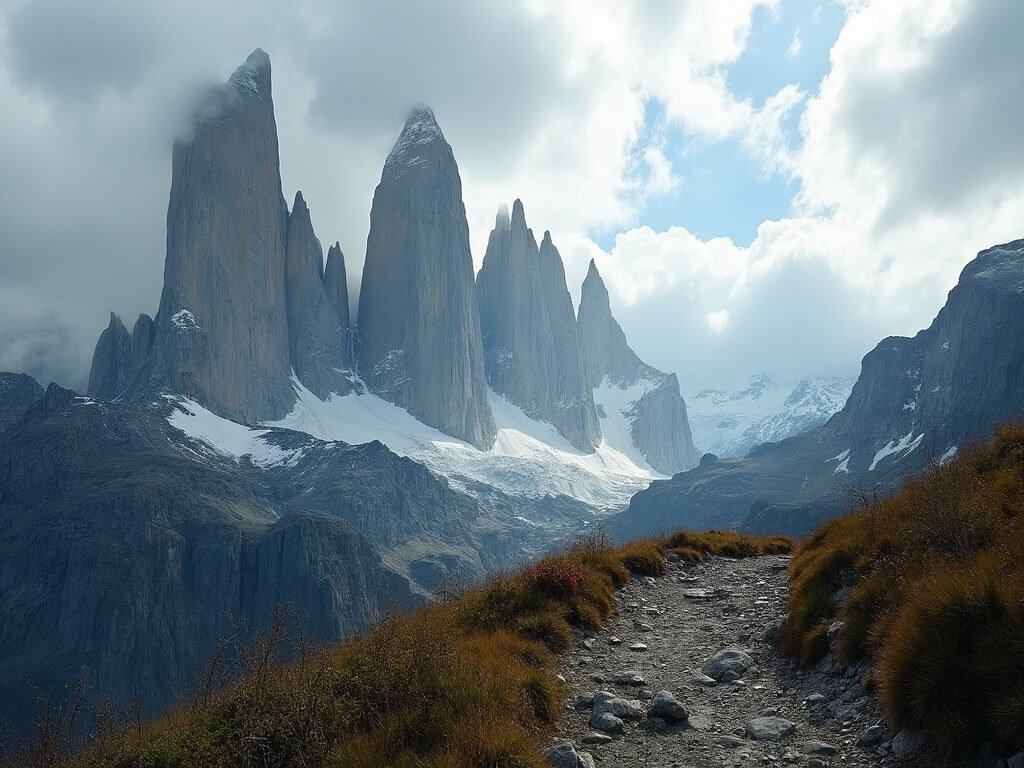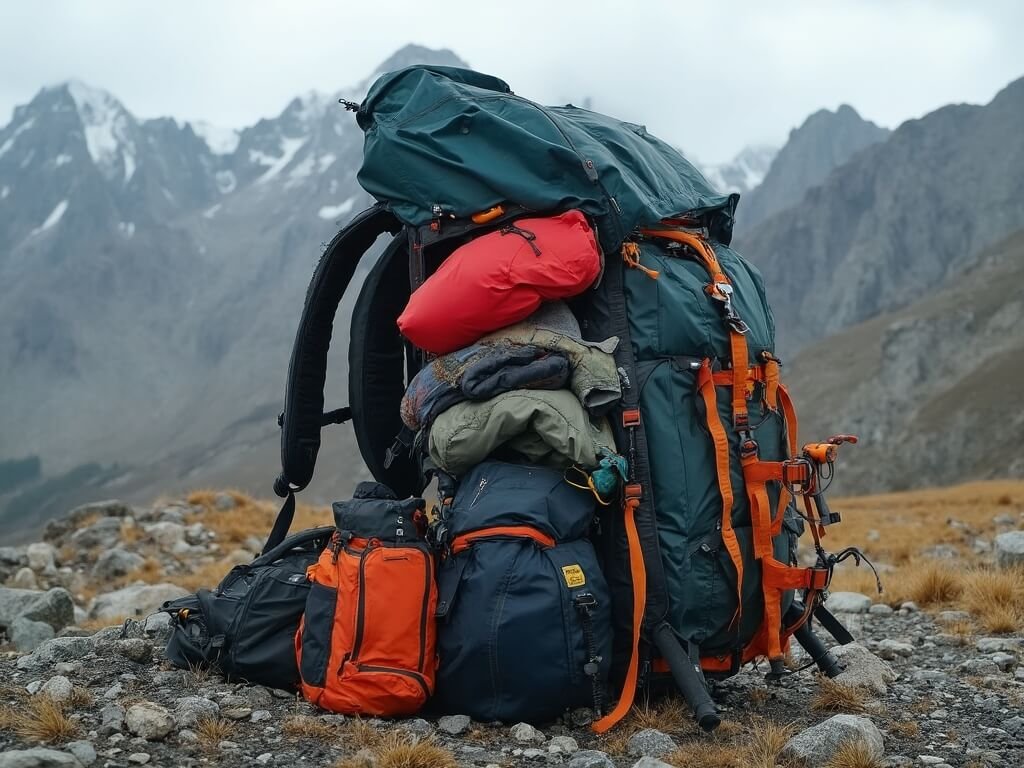Picture this: Jagged granite peaks piercing cloud-laden skies, wind whipping across pristine glacial landscapes, and trails that challenge even seasoned trekkers. Welcome to Patagonia—a backpacker’s ultimate playground spanning southern Argentina and Chile.
I’ve spent months exploring these wild terrains, and let me tell you, Patagonia isn’t just a destination—it’s an experience that will fundamentally reshape how you view wilderness.

Patagonia’s Geographical Marvel: More Than Just Another Hiking Destination
Stretching across two countries, Patagonia is a geographical chameleon. Imagine landscapes that transform from arid steppes to lush forests, from glacial lakes to snow-capped mountains—all within a few hundred kilometers.
Key regions include:
- Tierra del Fuego: The literal “end of the world”
- Southern Andes: Dramatic mountain ranges
- Lake District: Pristine water bodies surrounded by volcanic landscapes
- Patagonian Steppe: Windswept plains that seem to stretch infinitely
Why Backpackers Can’t Resist Patagonia’s Wild Call
This isn’t your average hiking destination. Patagonia offers:
- World-class trekking routes through untouched wilderness
- Legendary challenging terrain that tests your limits
- Unpredictable weather that demands respect and preparation
Timing Your Epic Adventure: When to Explore
Pro tip: Aim for the Southern Hemisphere’s summer (November–March). But be warned—”summer” here doesn’t mean guaranteed sunshine.
The region’s weather is notoriously temperamental. Strong winds, sudden storms, and temperature shifts are part of Patagonia’s DNA. Pack layers, be flexible, and embrace the adventure.
My Personal Patagonian Encounter
During my first trek in Torres del Paine, I experienced nature’s raw power. One moment, sunlight illuminated stunning granite spires; the next, hurricane-force winds nearly knocked me off my feet. I learned quickly: in Patagonia, you don’t conquer the landscape—you negotiate with it.
Chilean Patagonia: A Trekker’s Paradise
Torres del Paine National Park stands as the crown jewel. Two iconic treks await:
- W-Trek: 4–5 days of breathtaking views
- O-Trek: A more challenging 7–9 day circuit
Highlights include:
- Paine Massif’s dramatic peaks
- Grey Glacier’s electric blue surfaces
- Diverse wildlife: Guanacos, condors, foxes roaming freely
Pro tip: Book campsites and refugios well in advance. These fill up faster than a Chilean glacier melts.
Argentinian Patagonia: Another World of Wonder
El Chaltén, Argentina’s trekking capital, offers mind-blowing routes around Mount Fitz Roy and Cerro Torre. Imagine free camping beside some of the world’s most photogenic mountains.
Top hikes include:
- Laguna de los Tres
- Laguna Capri
- Laguna Torre
Each trail offers postcard-worthy views that will make your Instagram followers green with envy.
The wind is picking up, the mountains are calling, and our journey through Patagonia’s extraordinary landscapes has only just begun.
Prepare yourself for an adventure that will challenge everything you thought you knew about wilderness travel.
Want to experience more epic natural adventures?
- Explore icy wonders with our guide to Alaska’s glaciers and wildlife
- Set sail on coastal adventures in our guide to cruising through the Florida Keys
Practical Survival: Your Patagonian Survival Kit
Every experienced trekker knows: gear can make or break your expedition. In Patagonia, this truism becomes exponentially more critical.
Essential Gear Checklist:
- Waterproof, windproof outer shell
- Layered clothing system
- High-performance sleeping bag (rated to 0°C minimum)
- Water filtration/treatment system
- Robust hiking boots with ankle support
- Lightweight, sturdy tent designed for extreme conditions
Navigation: When Technology Meets Wilderness
GPS isn’t just convenient in Patagonia—it’s potentially life-saving.
Most trails are well-marked, but remote routes demand serious navigational skills. Offline mapping apps like Maps.me become your digital lifeline when cellular signals vanish into thin mountain air.
Pro tip: Download detailed topographical maps before leaving civilization. Paper backups? Always recommended.
For more insights, explore this ultimate guide to backpacking and hiking in Patagonia.
Budget Survival: How Much Cash Will You Burn?
Let’s talk money—because Patagonia isn’t a budget backpacker’s dreamland.
Estimated Daily Costs:
- Budget traveler: $30-50/day
- Moderate traveler: $75-120/day
- Luxury trekker: $200+/day
Insider Strategy: Bring substantial food supplies from larger cities. Remote towns charge premium prices that’ll make your wallet weep.
Check out this detailed backpacking guide to Patagonia for more financial planning tips.
Safety: The Unspoken Mountain Rules
During my most challenging Patagonian trek, I learned safety isn’t optional—it’s mandatory.
Non-Negotiable Safety Protocols:
- Always inform someone of your exact route
- Carry emergency communication device
- Pack emergency shelter/bivouac equipment
- Understand basic wilderness first aid
- Check weather forecasts obsessively
Environmental Responsibility: Leave No Trace
Patagonia isn’t just a destination—it’s a delicate ecosystem requiring profound respect.
Ethical Trekking Commandments:
- Pack out every single piece of trash
- Stay on marked trails
- Never disturb wildlife
- Use designated bathroom areas
- Minimize campfire usage
Border Crossing: The Ultimate Backpacker’s Chess Match
Crossing between Argentina and Chile isn’t just a geographic transition—it’s an adventure.
Key Border Crossing Tips:
- Carry multiple passport copies
- Understand each country’s entry requirements
- Have sufficient cash (card machines rare in remote areas)
- Learn basic Spanish border crossing vocabulary
When Technology Meets Wild Terrain
Modern trekking blends traditional skills with cutting-edge technology.
Recommended Tech:
- Satellite communication devices
- Portable solar chargers
- Lightweight tracking beacons
- Offline mapping applications
Final Wisdom: The Patagonian Promise
Patagonia doesn’t just test your physical limits—it transforms your understanding of wilderness, personal resilience, and human potential.
Every step is a story. Every trail, a lesson. Every vista, a reminder of our planet’s extraordinary beauty.
Whether you’re a seasoned trekker or ambitious novice, Patagonia awaits—challenging, unforgiving, and ultimately, profoundly rewarding.
Your ultimate Patagonian backpacking adventure starts now.
More adventures to explore:
- Visit the Alaska Glaciers and Wildlife
- Cruise Through the Florida Keys
- Explore the Historic Streets of Savannah
- Discover the Charm of Charleston
- Wander the Streets of Prague
Need more help planning your trek? Visit this ultimate guide to backpacking and hiking in Patagonia.











